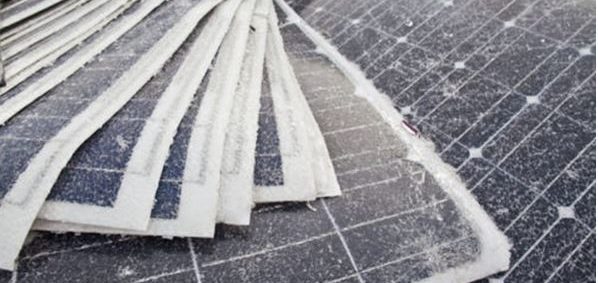Solar Panels are themselves….”SUSTAINABLE”: Recycling Solar Panels to make more Solar Panels!
In the United States the vast majority of solar installations have occurred within the past ten years. Because of the durability of solar panels, which often last well beyond their warrantied 25 years, the recycling of them is not a major issue quite yet. However, the path forward is clear – the market need for recycling of solar panels will only increase over time.
In 2017, the United States installed 10.6 GW of new solar energy. Using rough math (if every panel was 300 W), that’s 35.3 million new solar panels installed last year. At the beginning of 2018, the United States had 53 GW of solar capacity in operation. In about 30 years, a wave of 35.3 million panels may reach the end of their lifespans, not counting the hundreds of millions of panels that flooded the U.S. market in the last decade that may need to be disposed of sooner.
Solar panels are recyclable. Silicon solar modules are primarily composed of glass, plastic, and aluminum: three materials that are recycled in mass quantities. Other recoverable solar panel elements include copper, silver, tin, indium, gallium, selenium and cadmium telluride, which are rarer and in cases finite materials. The long-term success of the solar industry relies on successfully recovering these raw materials that produce solar modules.
A 2016 study by the International Renewable Energy Agency (IRENA) estimates the recyclable materials in old solar modules will be worth $15 billion in recoverable assets by the year 2050. This influx will make it possible to produce 2 billion new panels without the need to invest in raw materials. This means that there will be the capacity of producing around 630 GW of energy just from reusing previously used materials.
PV recycling will logically create green job opportunities as well. With continuous solar energy price reductions combined with available incentives, more and more households and businesses are choosing to invest in solar power systems. As a result, even more economic opportunities in the solar cell recycling sector will emerge. California SB 489 passed in 2015 and encourages safe disposition of old panels. California designates end-of-life solar panels as universal waste, a type of hazardous waste that is widely used in homes and businesses (like TVs or batteries). By California law, universal waste cannot be trashed or landfilled, but no guidelines are given on the proper way to recycle solar panels.
In July 2017, Washington passed a solar stewardship bill (ESSB 5939), requiring manufacturers selling solar products into the state to have end-of-life recycling programs for their own products. New York has a similar bill on the Senate calendar this year. Bill S2837A would require solar panel manufacturers to collect end-of-life panels for recycling.
On the International stage, the Waste Electrical and Electronic Equipment Directive (WEEE) of the European Union helped found a member-based organization called PV Cycle to build out a robust recycling infrastructure.
The benefits of solar energy are enormous for communities worldwide. Clean, renewable energy bolsters local economies, helps reduce greenhouse gas emissions, and requires little maintenance over the lifespan of the investment compared to other forms of energy generation.
It is now time for solar manufacturers, installers and consumers have recycling plans in place to ensure modules stay out of our nation’s landfills, as well as take advantage of the many economic benefits to recycling solar panels.
TruNorth Solar supports solar panel recycling and is engaged in the dialogue and efforts for the reuse of expended solar panel parts, doing everything possible to continue to change the world’s energy recipe! To speak about this and more with our TruNorth Energy Consultants contact us at info@TruNorthSolar.com or 612.888.9599.

